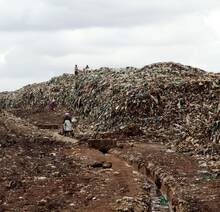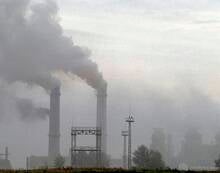By 2030, reduce the adverse per capita environmental impact of cities, including by paying special attention to air quality and municipal and other waste management
 Indicator 11.6.1: Proportion of urban solid waste regularly collected and with adequate final discharge out of total urban solid waste generated, by cities
Indicator 11.6.1: Proportion of urban solid waste regularly collected and with adequate final discharge out of total urban solid waste generated, by cities
In a rapidly urbanizing global society, solid waste management is a key challenge facing all the world's cities. The safe removal and subsequent management of solid waste is representing one of the most vital urban environmental services. Uncollected solid waste blocks drains, and causes flooding and subsequent spread of water-borne diseases.Globally, the thinking is shifting from merely removing waste before it becomes a health hazard to creatively minimizing its environmental impact. Attention in high-income countries may now be moving on to other aspects, but many cities in low- and middle-income countries are still working on phasing out open dumps and establishing controlled disposal.Without proper data collection and management, it is difficult to be accountable, transparent and even; to make effective strategies; and to budget for them. The absence of all of this, in turn, creates barriers for modern waste management system.
Municipalities should spend 20-50 percent of their available recurrent budget on solid waste management
- Solid waste management is a major challenge for many cities in developing and transitional countries.
- The amount of waste generated per person is rising, together with increases in wealth (as shown by GDP).
- Data shows that municipal solid waste management and wastewater contribute about 3 per cent to current global anthropogenic greenhouse gas emissions, about half of which is methane from landfills
Our Work
Improved Urban Environment in El-Gazira state through a Proper Solid Waste Management Strategy and Action Plan
Many states in Sudan do not have any proper mechanism for collection and safe disposal of solid waste management. The goal of the project is to contribute to improved urban environmental and public health conditions in Al-Gezira state by assisting the state authority capacities in the development and implementation of new waste management strategy and programme, through engagement of private sector and youth.
 Indicator 11.6.2 Annual mean levels of fine particulate matter (i.e. PM2.5 and PM10) in cities (population weighted)
Indicator 11.6.2 Annual mean levels of fine particulate matter (i.e. PM2.5 and PM10) in cities (population weighted)
Air pollution is a major environmental risk to health. Ambient (outdoor air pollution) in both cities and rural areas was estimated to cause 3.7 million premature deaths worldwide in 2012. WHO’s urban air quality analysis across 91 countries, reveals that more cities worldwide are monitoring outdoor air quality and reflecting growing recognition of air pollution’s health risks.In most cities where there is enough data to compare the situation today with previous years, air pollution is getting worse. But some cities are making notable improvements - demonstrating that air quality can be improved by implementing policy measures.
In fact, policies and investments supporting cleaner transport, energy-efficient housing, power generation, industry and better municipal waste management can reduce key sources of urban outdoor air pollution. By reducing air pollution levels, countries can reduce the burden of disease from stroke, heart disease, lung cancer, and both chronic and acute respiratory diseases, including asthma.
1600 cities worldwide are reporting air pollution levels
- About half of the urban population being monitored is exposed to air pollution that is at least 2.5 times higher than the levels WHO recommends - putting those people at additional risk of serious, long-term health problems
- Particulate matter pollution is an environmental health problem that affects people worldwide, but low- and middle-income countries (especially in the WHO Western Pacific and South-East Asia regions) disproportionately experience the burden of outdoor air pollution with 88% of premature deaths

